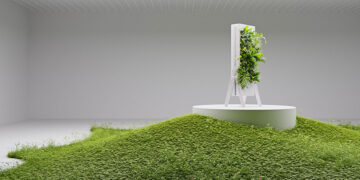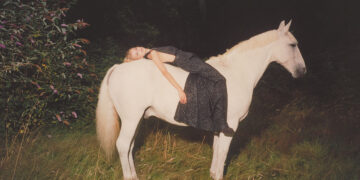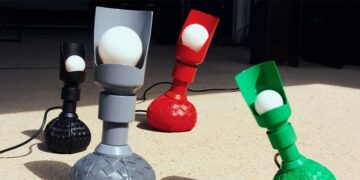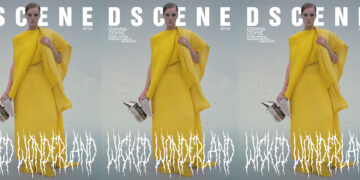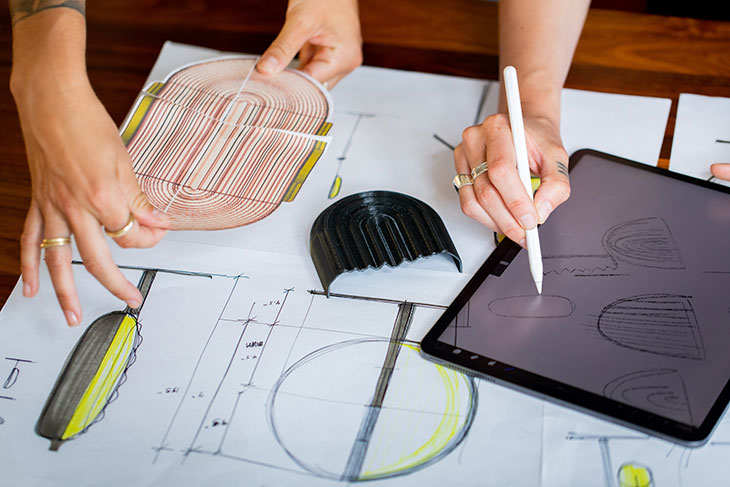
PROWL Studio stands at the forefront of a design revolution, redefining the principles of industrial design and research with a steadfast commitment to regenerative sustainability. As an incubator of innovative solutions for both people and the planet, PROWL integrates responsible materials, processes, and technology into the very fabric of its creations. At the heart of their practice is a holistic approach derived from a system-wide perspective, fostering cross-industry knowledge-sharing and harnessing distinct expertise to not only ask “how can we do less bad?” but more importantly, “how can we do the most good?” This ethos is embedded in every project, from product inception to envisaging its end-of-life, ensuring that design and regeneration go hand in hand, symbiotically and inseparably.
LIMITED COPIES LEFT – ORDER IN PRINT and DIGITAL
In this exclusive interview for DSCENE Magazine, Lauryn Menard, Co-Founder and Creative Director of PROWL, sits down with Editor Katarina Doric to talk about studio’s pioneering journey and its unyielding dedication to crafting a regenerative future. Menard discusses PROWL’s approach to challenging conventional design paradigms, their commitment to diversity and collaboration, and the innovative projects that embody studio’s mission to marry functionality with sustainability.
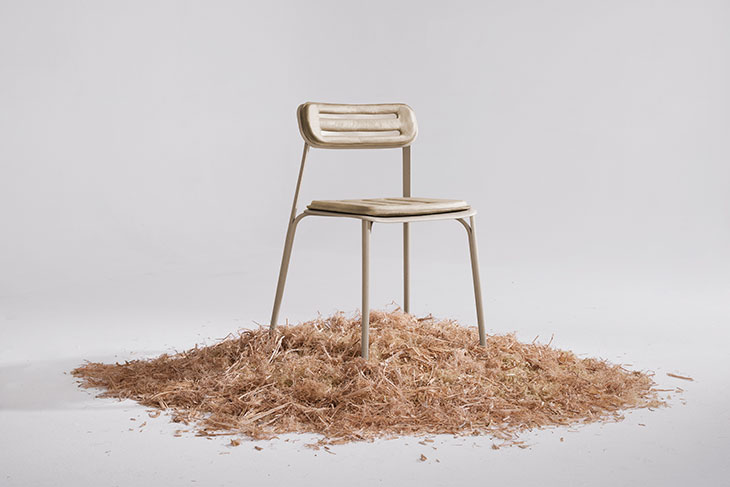
How does PROWL’s commitment to regenerative design influence the selection of materials and processes in the early stages of product development? – You really cannot design an object without materials. Simply put, at the end of a product’s life, relevancy, and use, all that is left is its materials. With this knowledge, we know that we need to consider materials first so that we can plan for responsible end-of-life and let the material lead the form factor and design process. Most things designed for mass production in the past few decades have been created with the assumption that plastics will be the affordable, easy option. We like to challenge this as often as we can.
Can you share how your holistic approach fosters knowledge-sharing across industries? – It is very important for us to be accessible, both as a studio and with the information we collect. This is why we publicly share our research reports, which we call Progress Projections.
There is a LOT of work to be done to undo the harm we have inflicted on people and the planet, and we don’t have time to waste.
As a women-owned studio, how does PROWL challenge industry norms and promote diversity in design and research? – One obvious thing we do the most is work with as many women as possible—point blank. We have both spent our careers as minorities in a male-dominated space. Has this been hard? Sure. However, it has also helped us identify the existing gaps and biases. To a degree, we believe that being able to see and experience these gaps and biases gives us the superpower to challenge the status quo. We could tell stories about how we have been pushed down by men or not been seen, but we prefer to see the silver lining, which is, in fact, a competitive advantage. It’s no coincidence that women are leading the charge on the regenerative design front.
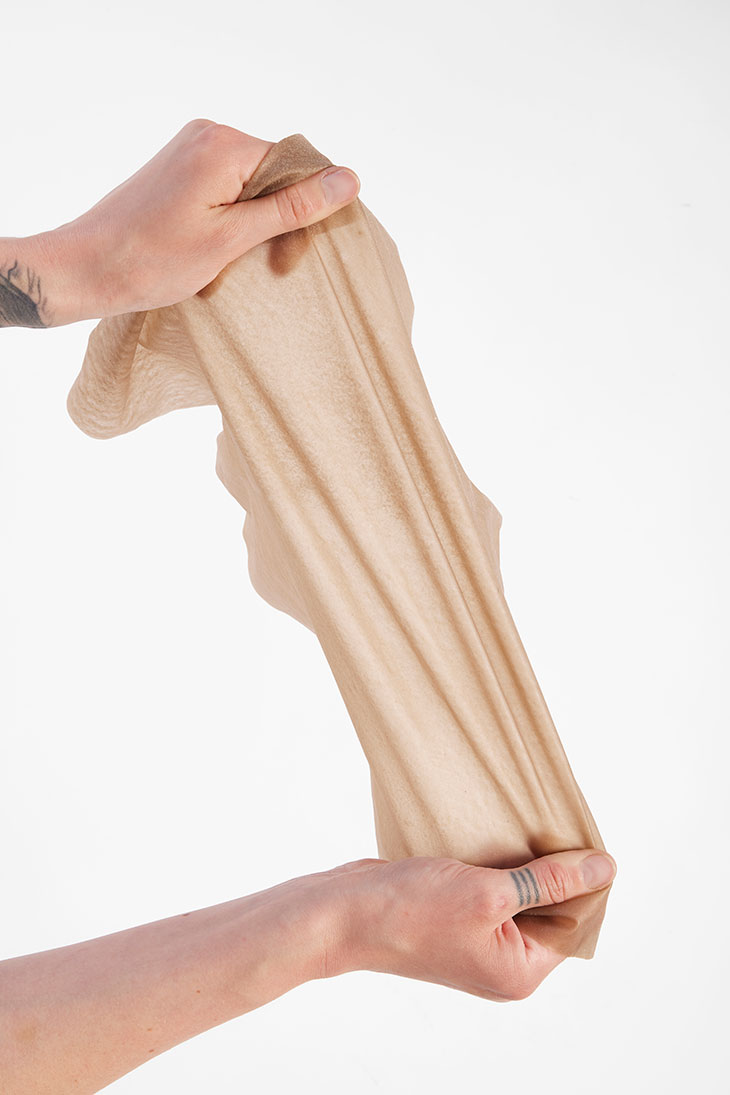
With the end-of-life scenario playing a crucial role in your design process, could you detail how this perspective influences product development in terms of materials and design choices? – This methodology follows our ethos: “We begin with the end.” When we uncovered this way of thinking, we had to fully redesign our own design process. It’s not natural for a designer to start a project considering a time when the thing they are pouring their heart and soul into will no longer be needed or relevant. It’s not comfortable, but nothing worthwhile is.
With that said, for every material partner we consider taking on for a project, we have to fully understand their end-of-life. It’s an added set of research that helps us understand both how the material functions and can be manufactured and how it can be disposed of. When these two things work well together, it makes for a perfect matchmaking scenario. Essentially—we are material matchmakers.
The PEEL chair is an example of sustainable innovation, particularly in combating the issue of fast furniture. How does the design and material composition of the PEEL chair reflect PROWL’s ethos of doing “the most good” for the planet? – The PEEL chair was definitely the most provocative example of this that we have done, mostly because it was internally incubated without any real constraints other than the fact that we knew it needed to be fully compostable. Will everyone want to own compostable furniture? Absolutely not. But we thought the question worth asking was, “What if?”
For PEEL, we constrained ourselves to produce a chair that could be completely mono-material (all stemming from the same main ingredient), flat-packable to save on transportation costs and emissions, and have the ability to be produced in existing plastic manufacturing infrastructure. We checked all of these boxes for the exhibition, but the development and engineering of the product will still take some time to get to a scalable place.
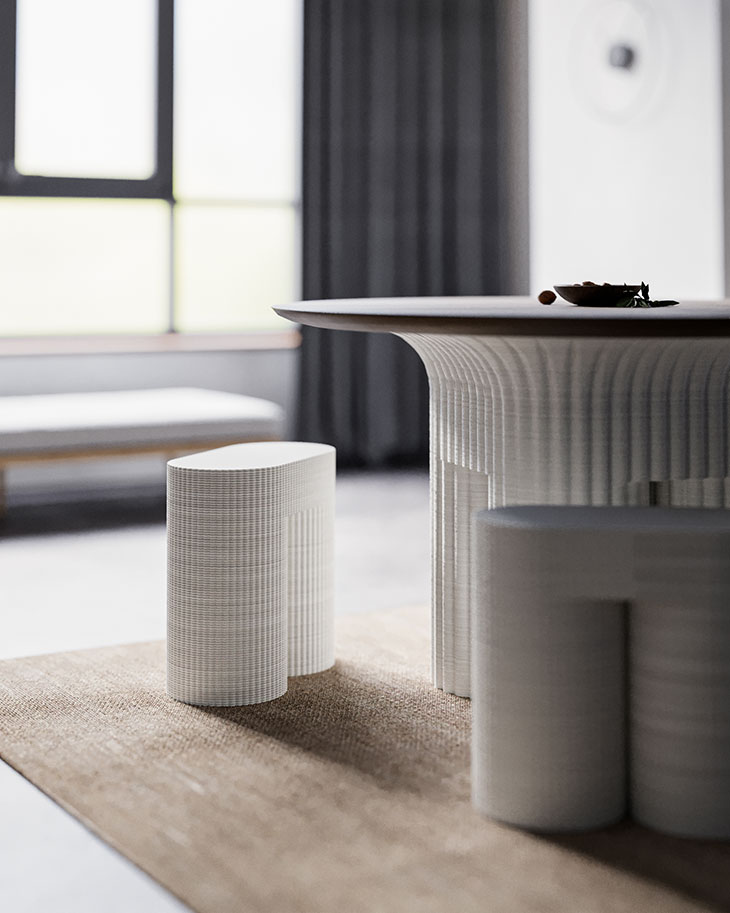
Regarding your collaboration with New Fibers in Mexico on recycling Tetrapak, what were the main challenges in creating a go-to-market strategy for such a unique material, and how did you address them? – The focus of this project was always on the end-use cases. We worked with Javier and his dad [the founders] to understand the properties of the material and what it is naturally good at. From there, once we better understood its function, it was a matter of exploring every possible industry that could utilize mass amounts of this material while identifying a problematic component that it could replace. We ended up landing on interior vertical surfaces and are currently working on developing that strategy today. You should see New Fibers hitting the market within the next year or so!
We always go to the wild and crazy, ground-shaking ideas first, then dial them in and hone them back to reality as much as we need to. If we’re not creating aspirational designs, we might as well not be doing this work.
The Focal Collection of task lighting is inspired by the precision lighting of clinical settings. Could you elaborate on how this inspiration translated into the design process, especially considering the use of plant-based materials and 3D printing techniques? – As the name suggests, these lights are focal points. When pointed down, the light focuses on the work below, and when pointed up, it becomes an ambient beacon within the home. Using 3D printing and plant-based materials is nothing new for us, especially since we prototype in this way in our studio, but Gantri’s production quality is far beyond anything we have experienced to date.
Our team took an iterative approach to form and detailing in both 2D and 3D to celebrate the ribbed textures ubiquitous with 3D printing in search of a light that not only mechanically allowed the light to be focused where needed but aesthetically as well. We wanted it to be something that people use and abuse in their homes for both focused work moments and rejuvenating for the quiet ones.
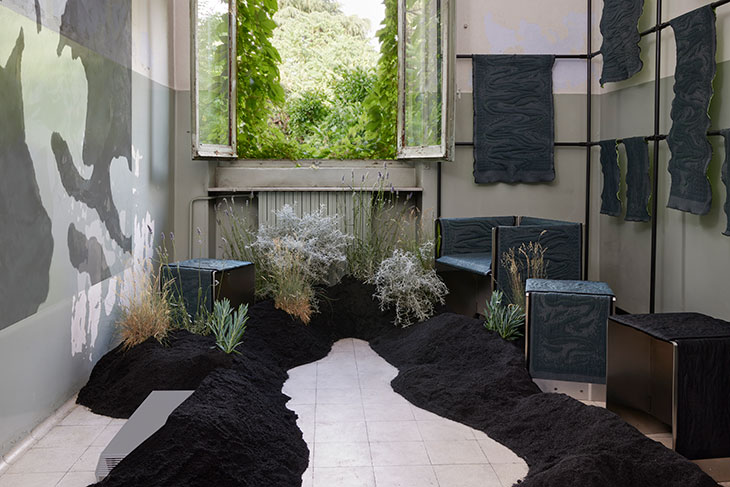
How does PROWL ensure that its regenerative design principles are communicated effectively to consumers, particularly when introducing innovative products like those made from hemp-based materials or recycled Tetrapak? – Long story short—we do our best. Something that has started to become a big part of our service offering is creating the narrative around products and materials that we work to design. This is essentially because we have done this so many times, and we are so deep in it that we have found creative ways to describe complex sustainable solutions in ways that the average consumer can grasp and understand. The main goal here is not only to get them to understand but also to emotionally care about it as well. This, of course, is different for every project we work on, which keeps us on our toes and keeps things forever exciting. The language needed to explain compostability and a “Factory-to-soil” life cycle is much different than telling a Tetrapak waste story about elongating a product’s life to divert it from its inevitable journey to a landfill.
Collaboration is a key theme in PROWL’s approach to creating a regenerative future. What have been some of your favorite partnerships so far, and looking ahead, who are your dream collaborators? – We hate choosing favorites, and honestly, there aren’t any, but we can share that a few new ones are currently in the works! When looking for partners or collaborators, we get especially excited when a company is already aligned with our values. This is honestly hard to find, but we have gotten very lucky. Maybe it is because we are so loud and public about our own.
We dream of working with partners who have a huge impact. Why? Well, because there is a LOT of work to be done to undo the harm we have inflicted on people and the planet, and we don’t have time to waste. The more impact we can have, the more progress we can make. This manifests in both, obviously, a partner’s scale and their vision and how big they dream.
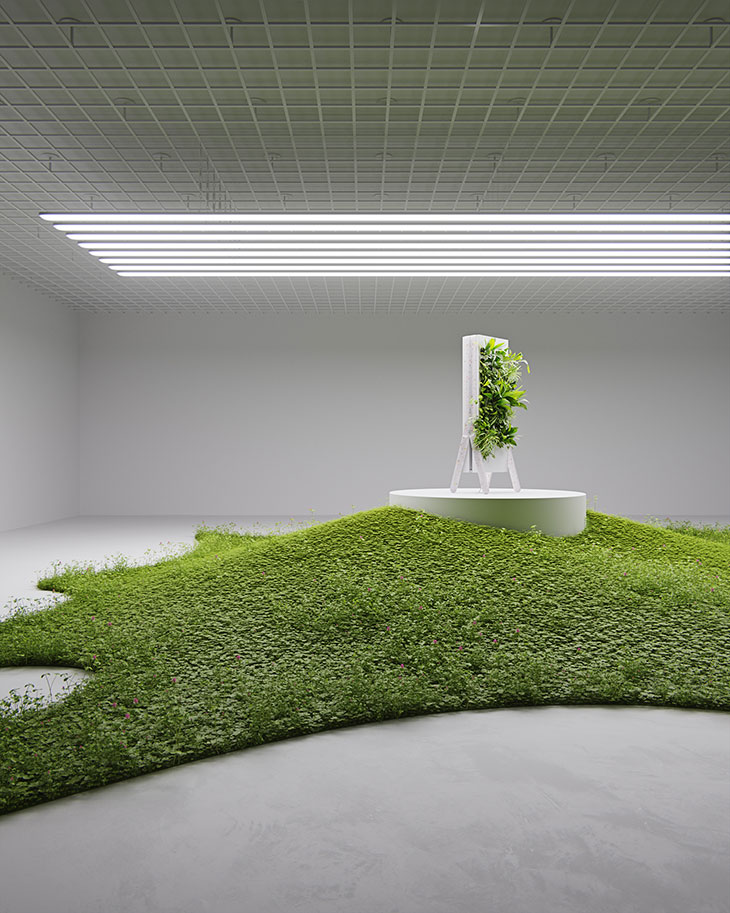
Measuring success by practicality is a central tenet for PROWL. How do you balance the demands of practicality and sustainability in the design and development phases? – First, we dream big. We always go to the wild and crazy, ground-shaking ideas first, then dial them in and hone them back to reality as much as we need to. If we’re not creating aspirational designs, we might as well not be doing this work. But, in the same breath, if we are not considering practicality, then our designs will never be manufactured or see the light of day. This balance is one that is always a dance and will honestly never have a simple answer. The answer, I guess, is that we will be learning about this for the rest of our lives.
Looking forward, how does PROWL plan to push the boundaries of sustainable and regenerative design further in future projects, and are there specific industries or materials you are particularly excited to explore? – Currently, we are having a lot of fun in the automotive and furniture spaces, working on some seriously fun projects. Unfortunately, that is as much as we can say about that, but you will see more to come if you follow us.
What’s next for you? – PROWL has very recently started incubating our first product company. This new company is adopting biomaterials to replace a ubiquitous single-use product made out of PVC. This is our bread and butter as a studio, so it was only a matter of time until we had our own product company. With that said, we plan to replace one problematic and toxic product at a time for the rest of our design careers!

